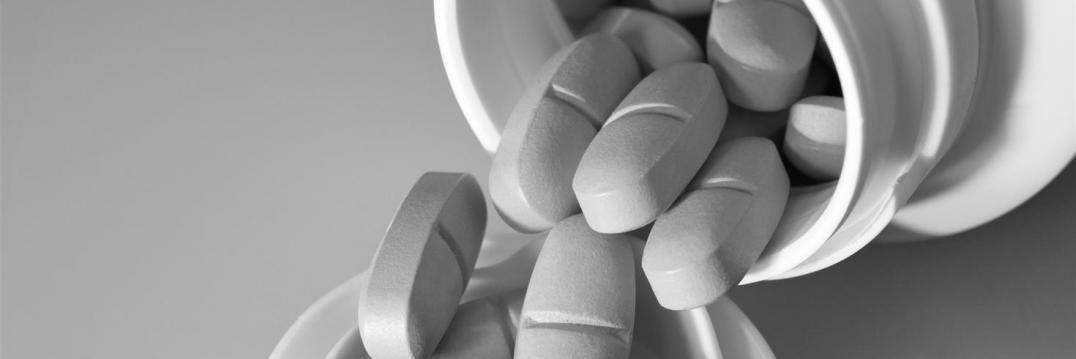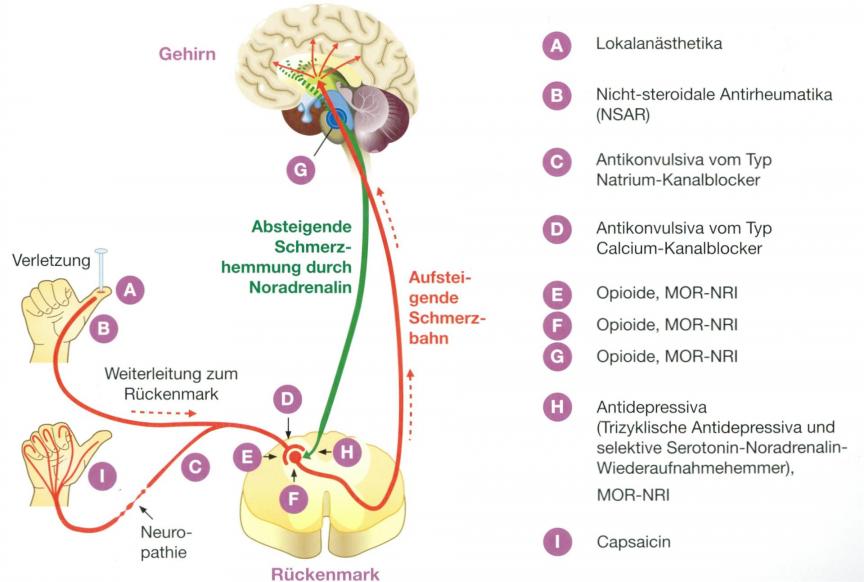medikamentöse Therapie
Drug treatment:
We will ask you which medications you are, on which you have been and what effect this medications had. Afterwards we will create a medicamentous treatment plan and evaluate it together with the patient. We will definitely have to take interactions with other medications into account. Normally we use preparations like antilogistics, morphine, neuroleptics or sometimes even antidepressants which need to be applied in a specific treatment plan.
This is the step by step treatment plan by WHO:
Step 1: non- opioid analgetics, prn. Combination with adjuvants
Step 2: weak opioid, prn. Combination with non- opioid analgetics and/or adjuvants
Step3: strong opioid, prn. Combination with non- opioid analgetics and/or adjuvants
The modern medicine doesn’t use this scheme anymore but its principles still apply for today as well. Due to new acquired knowledge we have a better understanding on which effects drugs have on the brain or the spinal cord. Therefor drugs which have been used to treat cramps or depressions can be used to treat pain if we adjust the dosage.
The best way is to treat with the safest and less medications. In rare cases a combination with other medications may be useful.We will ask you which medications you are, on which you have been and what effect this medications had. Afterwards we will create a medicamentous treatment plan and evaluate it together with the patient. We will definitely have to take interactions with other medications into account. Normally we use preparations like antilogistics, morphine, neuroleptics or sometimes even antidepressants which need to be applied in a specific treatment plan.
Wirkort der Medikamente
Antiphogistics:
Examples: Aspirin, Paracetamol, Dicofenac, Novamin, Ibuprofen
Mechanism: inhibits inflammatory reactions like pain, swelling, fever. Can be applied at the place of origin.
Indication: pain, arthritic pain, nociceptive pain
Side effects: gastric inflammation, Colon bleeding, cardial side effects
Others: Do not affect the brain. No effect on tiredness
Cortisone:
= steroid based antirheumatic
Mechanism: anti- inflammatory, decongestant, immunosupressive in high dosage
Indication for the pain therapy:
Swelling of nerves or the spinal cord.
Side effects: Gastritis, gain of weight, change of skin, sweating, reddening of the face, increased blood sugar level.
Others: If the drug gets applied locally side effects are very rare. If the patient suffers from diabetis the drug should be used very carefully.
Opiates:
Examples: Tramadol, Tilidin, Codein, Morphins
Mechanism: Inhibit pain in the spinal cord and the brain. Bind to special receptors which are also used by eg. Endorphine
Indication: severe pain, nociceptive pain, neuropathic pain
Side effects: Oclusion, tiredness
Others: during the first stages the patient is not allowed to handle any kind of machines or to drive a vehicle.


